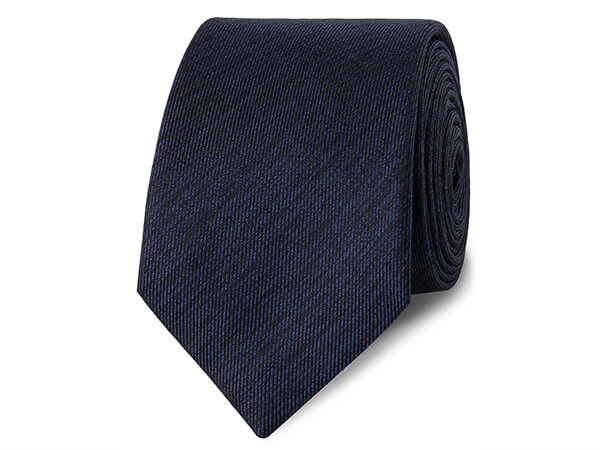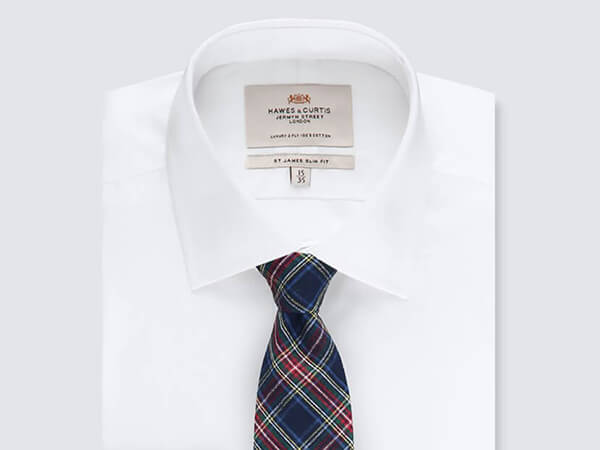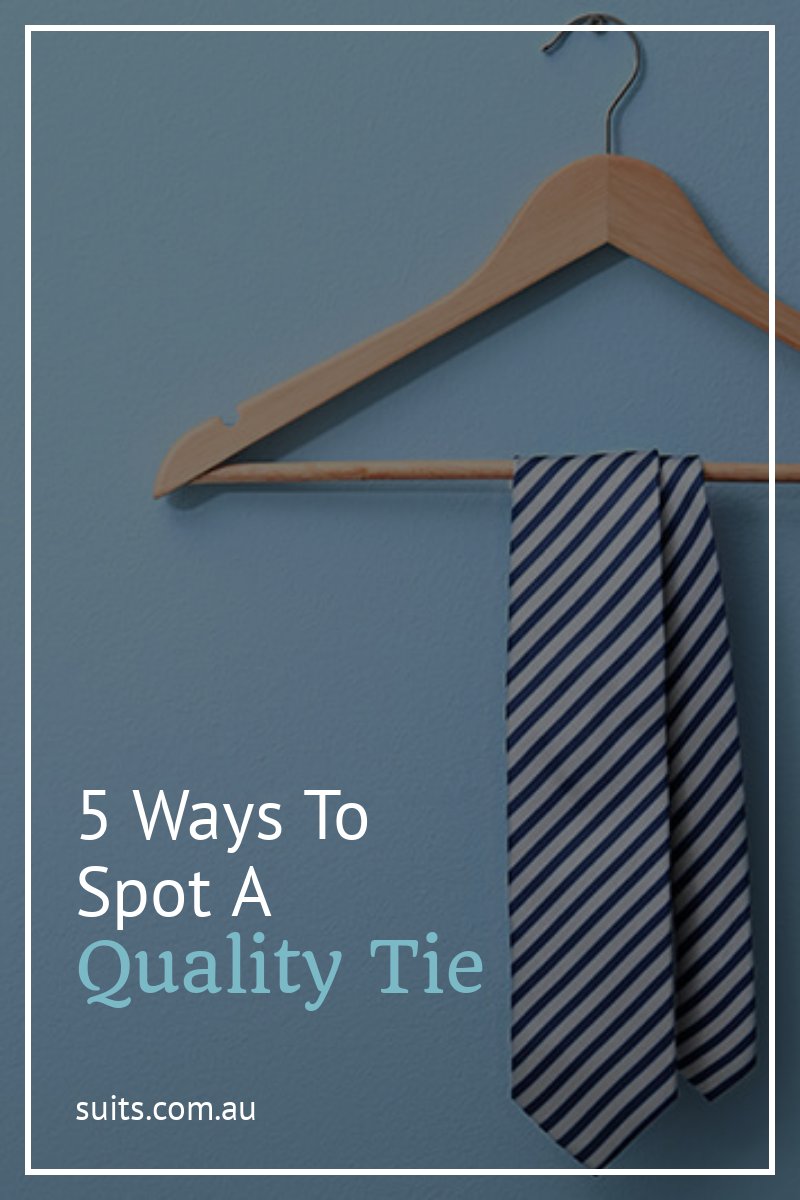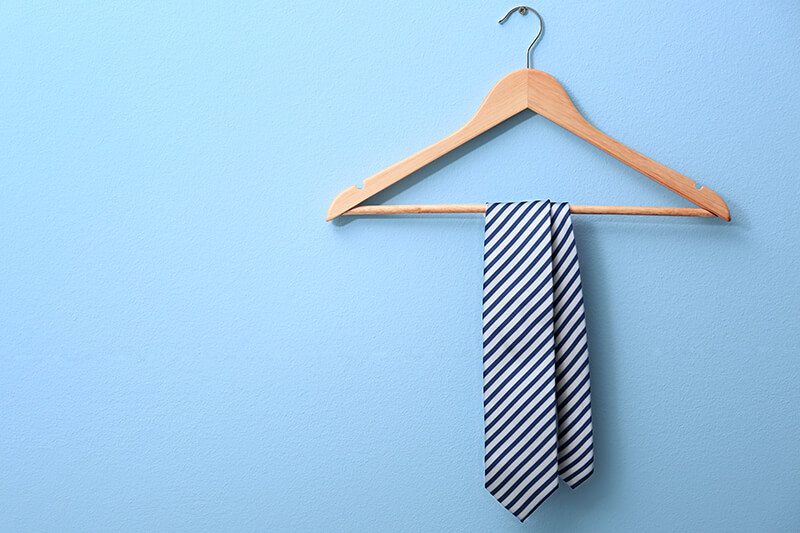A tie is the simplest and easiest way to accessories a suit, be it for business, a wedding or an event. Ties can be formal in style and colour or casual and fun. But if you have invested in a quality suit the last thing you want to do is pair it was a cheap tie.
While a tie may seem like a simple piece of fabric, it’s construction, material, design and style can greatly impact it’s overall quality, look and price. You may be asking yourself why do you need a quality tie, will anyone really notice the difference?
When you wear a tie with a suit it is a focal point of your whole outfit. This is often because it can be a contrasting colour or pattern to your suit or shirt and therefore stands out and draws attention. Or simply because it is around your neck and near your face, which is where anyone meeting and talking to you will be focused.
To help you work out what makes a quality tie there are five easy ways to spot them. And it’s not just price that determines it, in fact you can find all or at least most of these features in some budget friendly ties while not looking cheap.
1. The Outer Shell Fabric
The outer shell is the fabric you see and touch. Just like your suit fabric, look for ties made from natural fibres. Go for 100% silk or wool if you can, or even linen, cotton or cashmere. You want to avoid overly shiny fabrics (unless that is a particular style you are going for) as these tend to look synthetic, and therefore cheaper fabrics unless it is the natural sheen of a quality silk. If budget is a concern look for blends, such as wool/polyester which will be cheaper than pure wool but still retain much of the look and feel.

Navy Textured 100% Silk Tie from TM Lewin
2. The Interlining
Similar to the outer shell fabric, you should look for a tie with a quality fabric interlining. Or at the very least have an interlining at all. Often cheaper ties will skip this step or use low quality fabrics for the interlining. When a cheap polyester is used for the interlining it can create a thick and ridged tie and this stiffness can affect how well the tie drapes and how the knot looks. Try to find a tie first with interlining, and secondly with a quality interlining fabric often of similar quality to the outer shell material.
3. The Bias Cut
The fabric of a quality tie will be cut on the bias. This means that the fabric is turned at a 45 degree angle to be cut rather than straight across. The bias cut means the tie will drape correctly as fabric not cut on the bias can twist and not hang straight.
To test if a tie is cut on the bias you can do a stretch test. First you pull the tie lengthwise and see if there is any stretch, if it is cut on the bias it will stretch this way. Secondly you try to pull the tie at a 45 degree angle and it should not stretch at all. You can also drape the tie over your arm and if it twists at all it was not cut on the bias.
The reason cheaper ties are often not cut on the bias is because it wastes fabric and it is far more economical for mass producers to cut their fabric straight.
4. Seams & Patterns
Check all of the seams of the tie and make sure they line up. If it is a patterned tie always check that the pattern matches along any joins or seams. Hang the tie over your arm and look at the whole pattern, does it flow and has someone thought about how to place the pattern on the tie? Cheaply made ties will often not worry about the pattern placement as they are trying to limit the amount of wasted fabric, so always check how the pattern flows down the tie, does it skew off one side, is it cut off on one side, is the patterned cantered.

Tartan Cotton Tie from Hawes & Curtis
5. Hand Stitched & The Tie Tack
While many decent quality ties are machine made nowadays, if you want the best quality go for hand-stitched ties. Because a tie drapes and needs to be able to stretch and move it is better if the stitch is loose, and a machine made tie will often have a tighter stitching. Plus when a tie is hand stitched the draftsman can see how the tie drapes as they construct it.
If you look at the back of a tie, about two thirds down the tie there should be a noticeable horizontal thick stitch. This is the Tie Tack and it reinforces the stitching and helps keep the tie together. It also helps keep the tie keep its shape and not bubble.
Buying a Quality Tie
A tie is an essential accessory for most men, in particular if you have invested in a suit your absolutely need a few ties. While there are many cheap ties around, just like with your suit you should try to avoid the tell-tale signs of a cheap tie and instead look for the hallmarks of a quality tie. This will help elevate your whole suit look and style.
Remember though that you don’t need ties in every colour and pattern, instead it is better to invest in a few quality ties that will work with your look and needs. To help you find great ties check out our list of recommended tie retailers.


